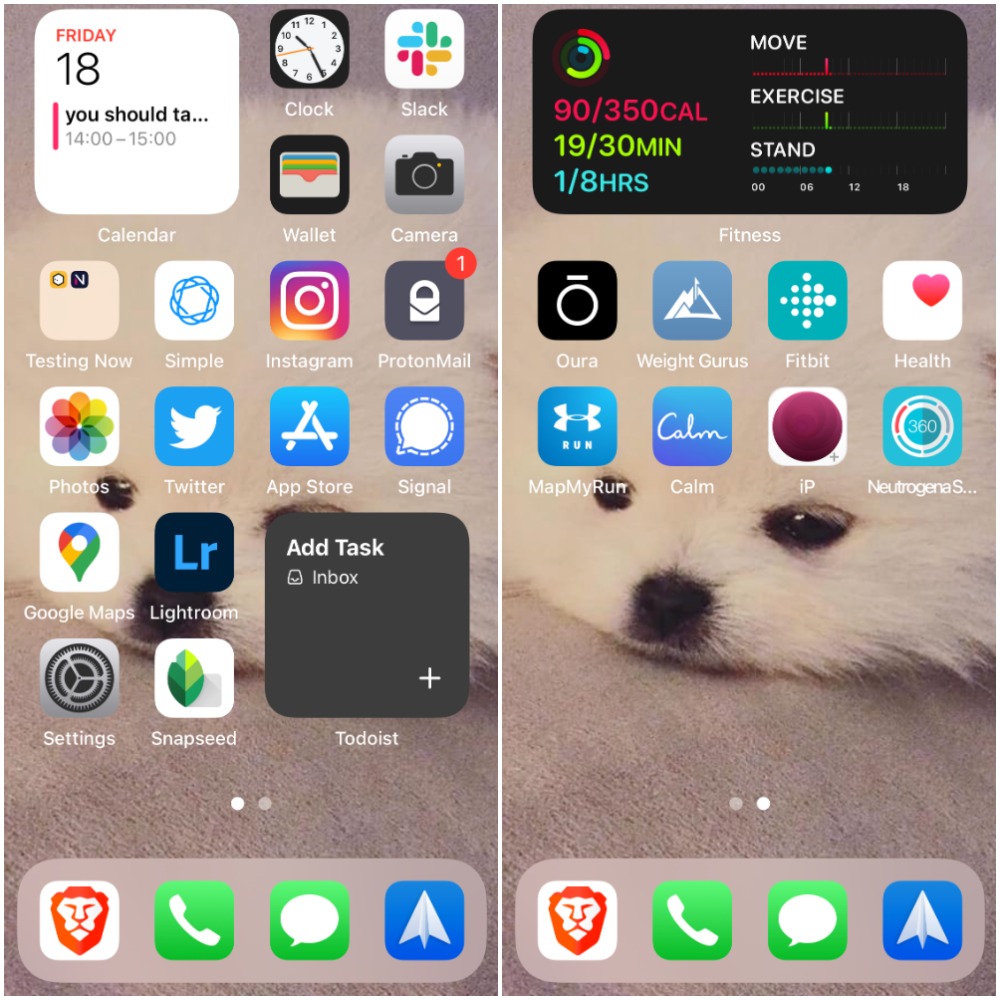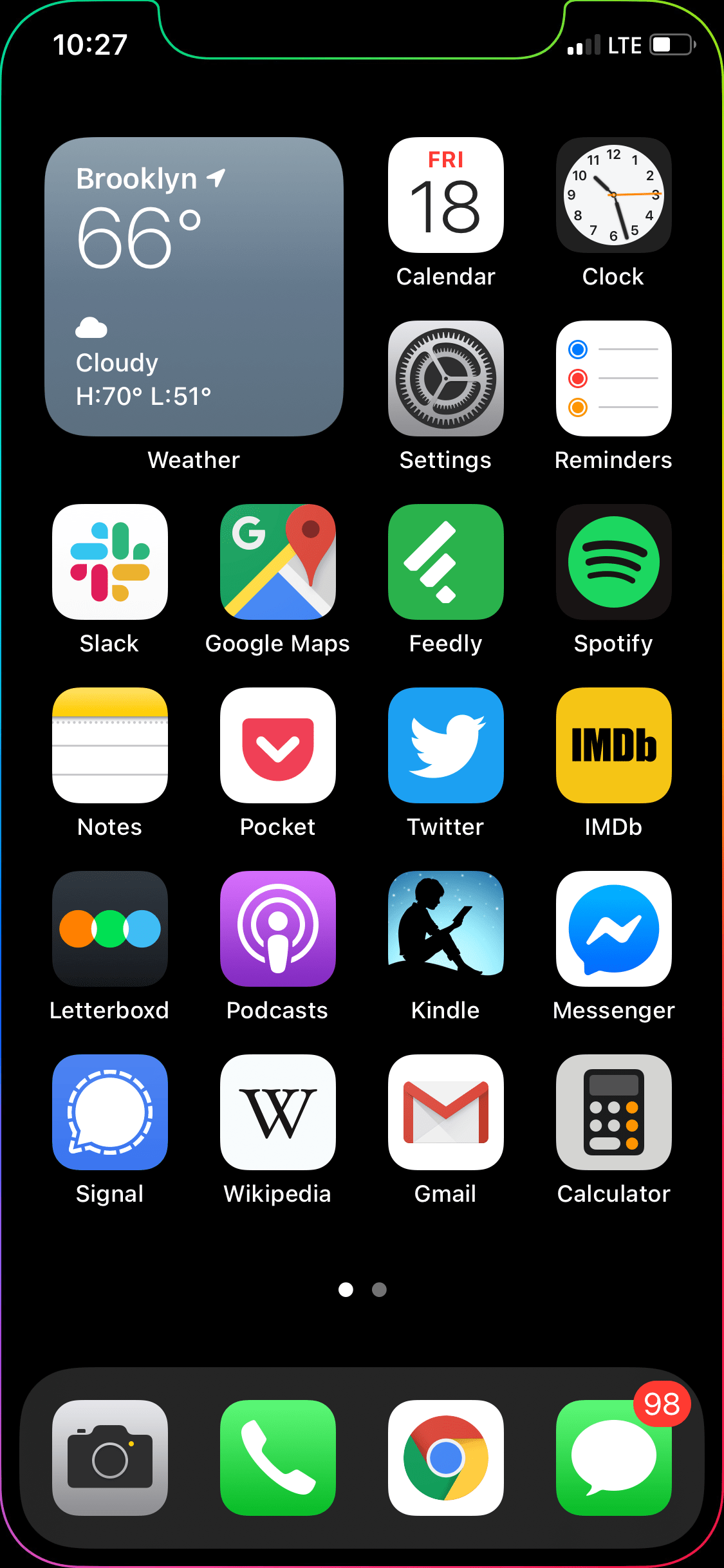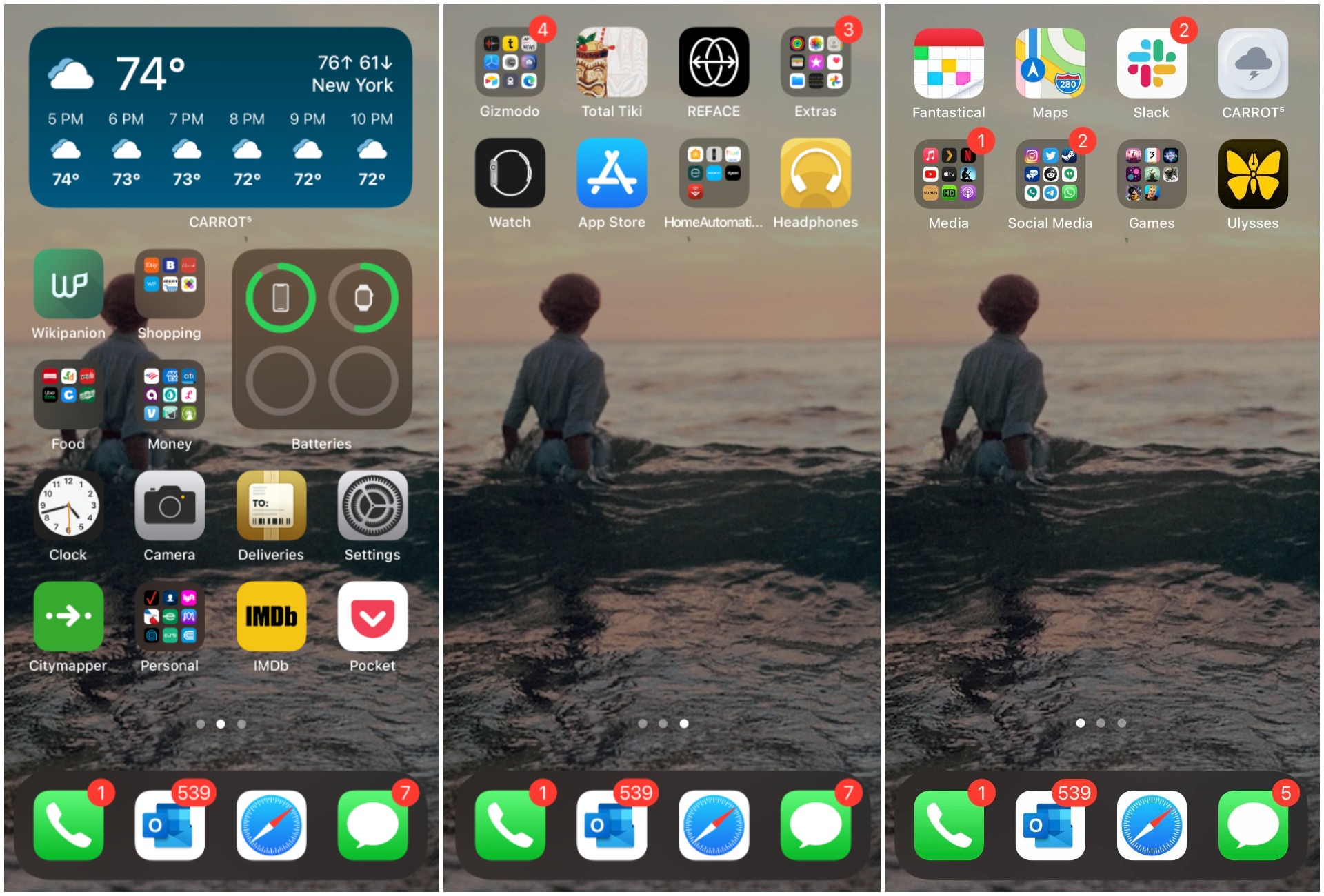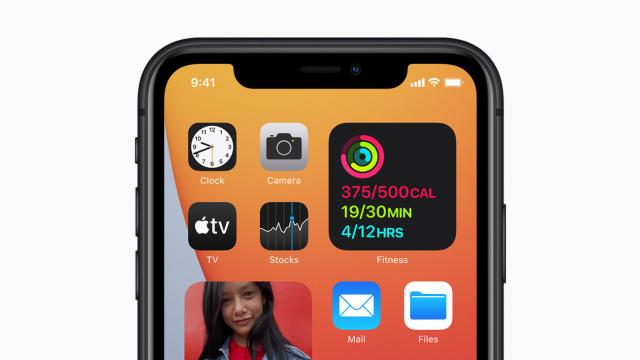There are many, many good features in iOS 14, particularly for the organisational nerds among us. But one of the most significant changes arriving on iPhones is widgets, a feature that allows you to sort and embiggen some key applications to make them perform that much better on your home screen.
The problem, though, is that figuring how to use them is not super intuitive, and figuring out how to organise your screens while also taking advantage of the App Library, for example, further complicates the process. (And yes, Android users, we realise you’ve had widgets and app drawers forever.) The feature on iOS 14 is fairly simple once you get the hang of it, and Apple has a couple of default options — like an outrageously large weather widget, or a Fitness column with your Apple Watch data — already geared up for you. Most widgets can be changed to accommodate more or less space on your screen, depending what you need from them.
First things first, though: How the hell do you even make a widget? Start by pressing and holding any app on your screen as you would to delete it. In the far upper lefthand corner, you’ll now see a plus sign; select it. (You can also get here by selecting the new Edit Home Screen option that appears when you long-press an app.) A widget menu will appear, and you can select one of Apple’s recommended apps, scroll down to see additional widget options, or search for one yourself. Selecting an app from the widget menu will bring up a size navigation screen. When you’ve figured out which size widget you prefer for the app, select Add Widget.
Playing around with these is really the only way to figure out how to organise your screens. Keep in mind, though, that a widget for weather or notes will be added in addition to your regular app icons. That’s where the App Library comes in. (You can find it by swiping right from your rightmost home screen). iOS 14 will sort all the stuff you banish here into easy-to-find categories like Recently Added, Entertainment, Travel, and Games. You can also search for a specific app from the search bar at the top of this screen.
Think of the App Library as a home for all the stuff you don’t need to be immediately accessible every time you open your phone — like a well-organised junk drawer. It also helps keep your home screens tidy, as my colleague Victoria Song demonstrated with this deeply satisfying layout:

Victoria told me she uses the rightmost column on her first page for things she can select with her thumb when she’s holding her phone with one hand. The second screen she uses for apps she needs as a wearables reviewer, while “literally every other app has been banished to the App Library.” As god intended. (I stole her Fitness widget orientation, I liked it so much.)
Gizmodo consumer technology editor Caitlin McGarry — who absolutely loves weather, apparently — afforded 16 precious app spaces to one monstrous forecast widget (on the left), which is certainly a decision. My colleague Rhett Jones (on the right) was a lot more pragmatic about it:


And senior consumer technology editor Alex Cranz is operating on a level I will not even try to begin to understand. A battery widget to drive her mad. A cluster of super-stuffed app folders with nearly a dozen unread notifications between them. Behold:

All of this is to say, there are many ways to hack these settings. And maybe your phone was so perfectly organised prior to the iOS 14 rollout that all of this seems silly. It’s also possible widgets are a waste of time — who knows! But hey, if they help you better manage your screen experience even just a little, why not give them a shot?
